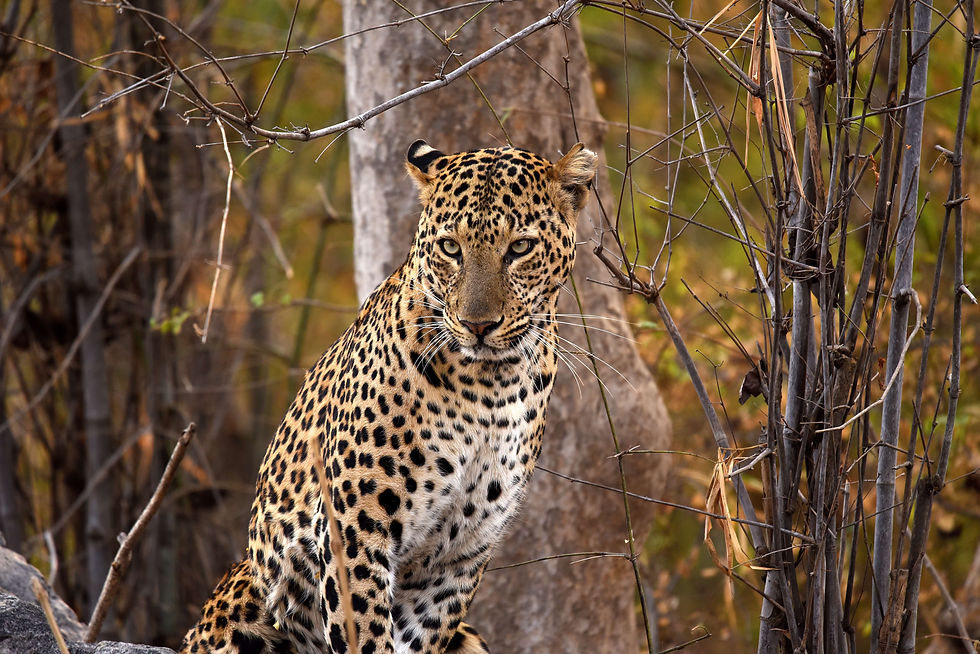Kabini 2023
- Sateesh Narasimhaiah
- Sep 10, 2023
- 5 min read
After long time due to Knee surgery, along with my good old friends Viswanath and Dr. Shrikanth Hegde and Dr. Paramesh From Shimoga- visited Kabini from 2nd April to 4th April 2023
A safari in Kabini is an adventure of a lifetime.
Kabini forest reserve is one of the best wildlife destination in Karnataka mainly because of its accessibility, rich green vegetation, water body and possibility of the animal spotting like herds of Elephants, Jaguar, Tiger and Black Leopard. An eighty km drive from Mysore or 205 kms drive from Bengaluru makes the accessibility much more easier for people from Karnataka and people from Kerala. The Kabini Wildlife Sanctuary covers an area of around 55 square miles and is home to a vast range of wildlife species including elephants, tigers, leopards, crocodiles, and over 250 species of birds. Taking a safari gives you the opportunity to experience the beauty of this natural wonderland, seeing wildlife up close, and capturing stunning photographs.
There are two to three types of safaris available in Kabini - jeep safari and boat safari and forest dept BUS Safari
Jeep Safari: [ only JLR ]
The jeep safari takes you deep into the forest, giving you a chance to see animals such as elephants, deer, wild boar, jackals, and foxes. The jeeps have experienced drivers who know the forest well, and they will take you to the best spots to see the wildlife. The safari lasts for around 2-3 hours and is best done in the early morning or late afternoon.
Boat Safari:
The boat safari is a unique experience that takes you through the backwaters of the Kabini River. You get to see a different side of the sanctuary and are likely to spot animals such as crocodiles, otters, and a variety of birds. The boat ride lasts for around an hour and is available in the morning and evening.
Both options offer a unique and exciting adventure for wildlife enthusiasts and nature lovers alike. Regardless of which safari you choose, make sure to bring your camera and binoculars to capture the stunning views and experiences.
Safari Ticket Bookings
U can book your tickets through the forest office near Dammankatte gate near antharsanthe village or through online web https://tickets.nagaraholetigerreserve.com/safariDetails/3/Kakanakote%20(Kabini)

The forest dept safari timings are 6:00 - 8:30 in the morning and 3:30-6:00 in the evening during the week days. on the weekend there will be two safaris 3 to 4-30 and 4-30 to 6pm costs about 350 per safari
For the evening safari, you need to buy tickets at 10:00 in the morning and for the morning safari, tickets are issued at 4:00 pm. Seats are limited 40+ as there are now 3-4 mini buses.
Ticket prices are 500 per head if you go through the forest dept buses. The entire ticketing process is a pain.
if u can afford prices you can book through JLR
As it was weekend we started from evening safari on 3rd April 2023, we had booked both safaris together, first safari started at sharp 3:30 p.m. and came to an end at sharp 6 p.m.
After few minutes of entry into forest, we had a fag end of first safari of 3 to 430pm we spotted a tigress taking a dip in the water. All of us couldn't believe our luck for spotting such a magnificent animal into the tour it was such a wonderful trip where me and friends enjoyed it thoroughly. We even went for the safari in the morning and it was a great pleasure to spot the tigers on the way
Along with the tigress we also spotted a leopard couple, hundreds of spotted deer, Indian giant squirrel, sambars, many langurs, 3 peacocks - 2 of them opened their feathers and danced, birds, bison, wild pigs. The road is dusty. Overall a good safari tour.
When planning a safari in Kabini, make sure to book in advance as the sanctuary is often crowded, especially during the peak season. Additionally, follow all the rules and regulations to ensure the safety of yourself and the wildlife.
We had nice sighting of Mating of Indian Roller through the safari- little information about breeding of Indian Roller
The Indian roller (Coracias benghalensis) is a bird of the family Coraciidae. It is 30–34 cm (12–13 in) long with a wingspan of 65–74 cm (26–29 in) and weighs 166–176 g (5.9–6.2 oz). The face and throat are pinkish, the head and back are brown, with blue on the rump and contrasting light and dark blue on the wings and tail. The bright blue markings on the wing are prominent in flight. The sexes are similar in appearance. Two subspecies are recognised.
The Indian roller occurs widely from West Asia to the Indian subcontinent. Often found perched on roadside trees and wires, it is common in open grassland and scrub forest habitats, and has adapted well to human-modified landscapes. It mainly feeds on insects, especially beetles. The species is best known for the aerobatic displays of males during the breeding season. Adult males and females form pair bonds and raise the young together. The female lays 3–5 eggs in a cavity or crevice, which is lined with a thin mat of straw or feathers. The roller is the state bird of three Indian states.
Breeding
The breeding season is March to June, slightly earlier in southern India,when adult males and females form pair bonds. During courtship, mates perform aerial displays which include steep, undulating flights, somersaults, nose-drives, hovering and lateral rolling. This is accompanied by vocalizations. The pair then perch and display to each other with bows, dropped wings and fanned tails and may engage in allopreening.The nest site is usually an existing hole in a tree, a dead palm or building but may also be a hole in a mud bank. The hole may be excavated completely in soft material such as rotten wood. A thin mat of feathers, straw or grass is placed at the bottom of the cavity.
The clutch consists of 3–5 eggs, which are white and oval with an average size of 33 mm × 27 mm (1.3 in × 1.1 in). The eggs are incubated mainly by the female beginning as soon as the first egg is laid and hatch asynchronously after 17 to 19 days. The young are naked when first hatched and are fed and cared for by both parents. The fledging period lasts 30 to 35 days.
In conclusion, a safari in Kabini, Karnataka, is an experience of a lifetime. The beauty of the wildlife sanctuary, its various flora and fauna, and the opportunity to see the animals up close is an unforgettable experience. Whether you choose a jeep safari or a boat safari, you will surely soak in the beauty of the place and have an adventure-filled trip.
March and April seem to be the best months to visit Kabini to spot the big cats
For more Information Please contact the following
Deputy Conservator of Forests & Director
Nagarahole Tiger Reserve, Forest Campus,
Old BM Road, Hunsur – 571105.
Ph: 08222-252041
Email – dirnagarahole@aranya.gov.in
Source: Wikipedia and Chatgpt
























































Comments